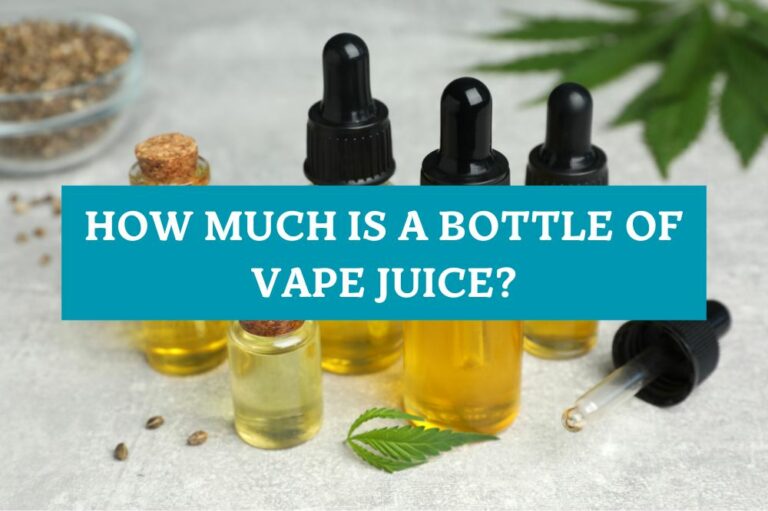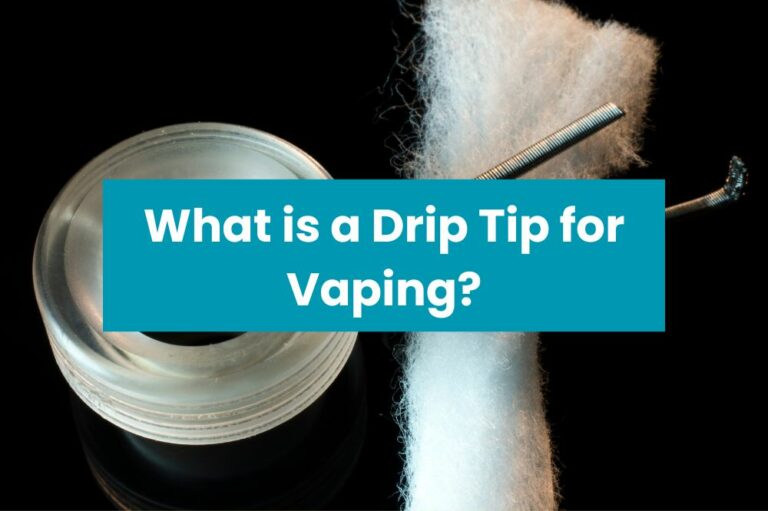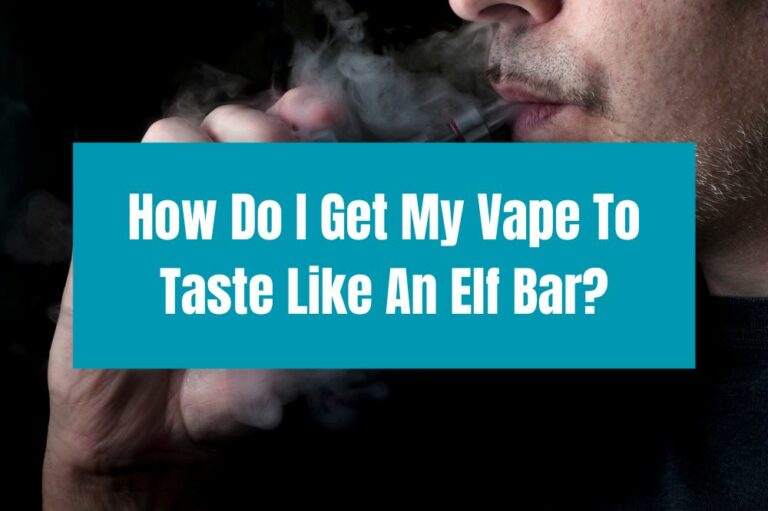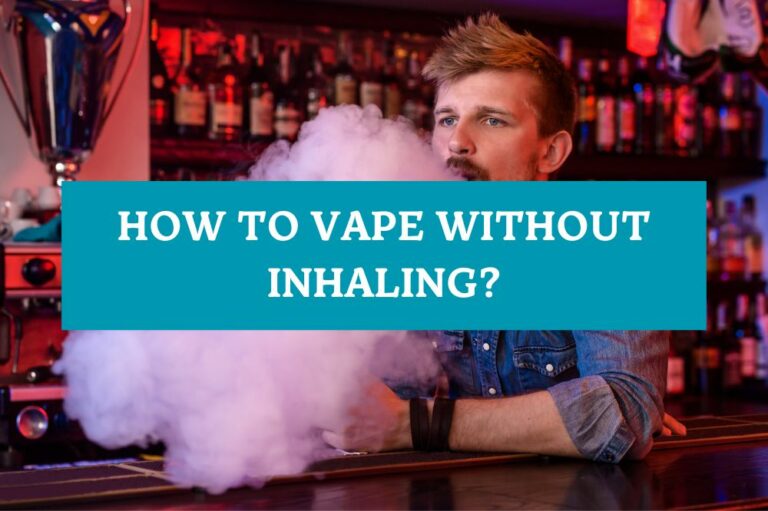What is Released in Vape Smoke?
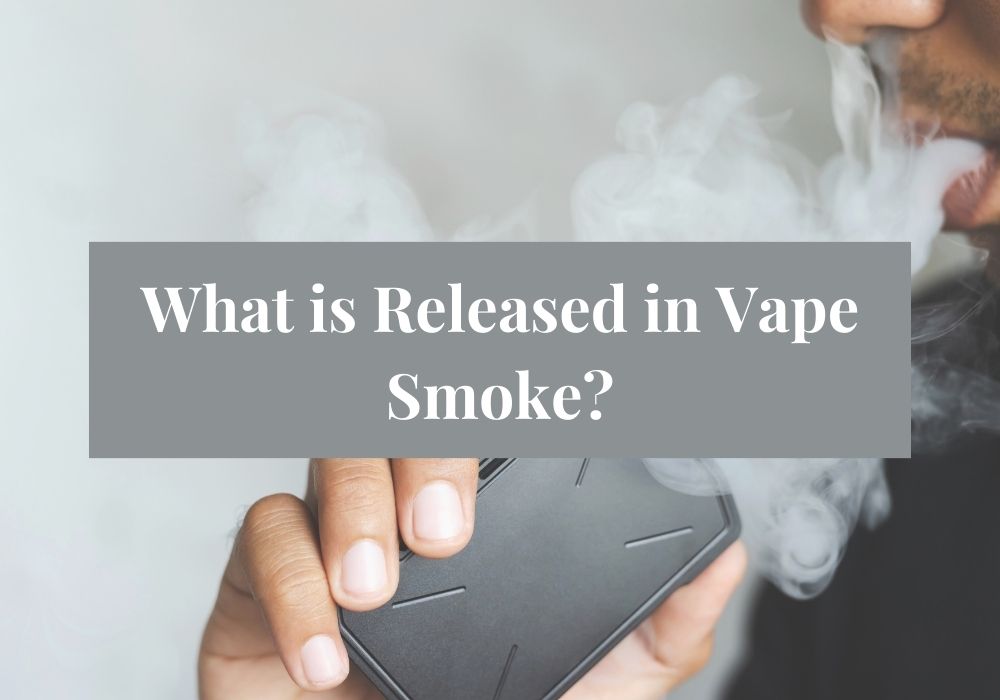
If you’re curious about vaping and wondering what exactly is released in vape smoke, you’re not alone. Vaping has become increasingly popular in recent years, especially among young people. While many people believe that vaping is a safer alternative to smoking, there are still concerns about the potential health risks associated with vaping.
Vape smoke, also known as vapor, is produced when a liquid is heated and turned into an aerosol that can be inhaled. The liquid used in vapes, also known as e-juice or e-liquid, typically contains a combination of nicotine, flavorings, and other chemicals. When the liquid is heated, it creates a vapor that can be inhaled into the lungs. While the exact composition of vape smoke can vary depending on the type of device and the e-juice used, there are some common ingredients that are typically found in vape smoke.
Some of the chemicals that have been found in vape smoke include formaldehyde, acetaldehyde, acrolein, and diacetyl. These chemicals are known to be harmful when inhaled, and can cause a range of health problems, including lung damage and respiratory issues. While vaping may be less harmful than smoking traditional cigarettes, it’s important to understand that there are still risks associated with this popular activity.
Understanding Vape Smoke
If you are new to vaping, you may be wondering what exactly is in the smoke that you are inhaling. Vape smoke, also known as aerosol, is a mixture of several substances, including nicotine, flavorings, and other chemicals. The exact composition of vape smoke can vary depending on the type of device used, the e-liquid brand, and the temperature at which the device is operated.
SPIRITBAR Katana BP10000
- Slender, leather-textured body reminiscent of a katana handle for an authentic samurai feel
- Unique samurai-inspired e-liquid flavor - fruity yet not too sweet, with a luxurious, elegant aroma
- Powerful 650mAh rechargeable battery for extended vaping time
- Large 18ml e-liquid capacity and 10,000 puff capacity
- Advanced mesh coil and e-liquid & power display screens for optimal vaping experience
The special juice captures the essence of the samurai spirit with its rich, smoothly pulsating flavor that brings new satisfaction with every puff. The device's slender, leather-textured design evokes the grip of a samurai's katana, making this product a perfect choice for beginner vapors.
One of the main components of vape smoke is nicotine. Nicotine is a highly addictive substance that is found in tobacco plants. When you inhale vape smoke, the nicotine is absorbed into your bloodstream, which can lead to addiction and other health problems.
In addition to nicotine, vape smoke also contains flavorings. These flavorings are added to e-liquids to give them a specific taste or aroma. Some e-liquids contain natural flavorings, while others contain artificial flavorings. It is important to note that some flavorings used in e-liquids can be harmful when inhaled in large quantities.
Finally, vape smoke contains other chemicals that are used in the production of e-liquids and the operation of vaping devices. These chemicals can include propylene glycol, vegetable glycerin, and various additives. While these chemicals are generally considered safe for consumption, there is still some debate over their long-term effects when inhaled.
Overall, it is important to understand the composition of vape smoke and the potential health risks associated with vaping. If you are considering using a vaping device, be sure to do your research and consult with a healthcare professional to determine if it is a safe choice for you.
Components of Vape Smoke
When you vape, you inhale a cloud of aerosol, which is commonly referred to as vape smoke. This aerosol is composed of several different components, including nicotine, flavorings, propylene glycol and vegetable glycerin, and metals and other particles. Let’s take a closer look at each of these components.
SPIRITBAR Jack’s Flask 9000 Puffs
- Stylish pirate flask-shaped body providing an exciting vaping experience
- Delivering up to 9000 puffs per device
- 20ml e-liquid capacity with 50mg nicotine strength for satisfying throat hit
- Specialized pirate-themed e-juice flavors for rich, swirling taste
- Premium mesh coil optimizes flavor profile for maximum vaping enjoyment
This disposable vape captures the daring spirit of the high seas with its flask styling and signature pirate e-juice flavors. The extraordinary battery life provides 9000 indulgent puffs for extended vaping pleasure. Live boldly and freely with the Jack's Flask - a legendary vaping experience fit for a pirate's adventures.
Nicotine
Nicotine is a highly addictive substance that is found in tobacco products and is also added to many e-liquids. When you vape, the nicotine in the e-liquid is heated and turned into a vapor that you inhale. Nicotine can raise your heart rate and blood pressure, and it can also lead to addiction. It’s important to note that not all e-liquids contain nicotine, and you can choose to vape nicotine-free if you prefer.
Flavorings
E-liquids come in a wide range of flavors, from fruity to minty to dessert-inspired. These flavorings are added to the e-liquid to give it a specific taste and aroma. While flavorings are generally considered safe for consumption, some studies have shown that certain flavorings can be harmful when inhaled. For example, some flavorings contain diacetyl, which has been linked to a condition called “popcorn lung.”
Propylene Glycol and Vegetable Glycerin
Propylene glycol and vegetable glycerin are two common ingredients in e-liquids. These substances are used to create the aerosol that you inhale when you vape. Propylene glycol is a synthetic compound that is used in many different products, including food, cosmetics, and pharmaceuticals. Vegetable glycerin is a natural compound that is derived from vegetable oil. Both propylene glycol and vegetable glycerin are generally considered safe for consumption, but some people may be sensitive to these substances and experience irritation when they vape.
Metals and Other Particles
When you vape, you also inhale tiny particles that are released from the heating coil in your device. These particles can include metals like lead, nickel, and chromium, as well as other substances like formaldehyde and acetaldehyde. While the levels of these particles are generally lower in e-cigarette aerosol than in cigarette smoke, they can still be harmful when inhaled in large amounts over a long period of time. It’s important to choose a high-quality device and use it properly to minimize your exposure to these particles.
Health Risks Associated with Vape Smoke
Vaping is often marketed as a safer alternative to smoking traditional cigarettes. However, research suggests that the chemicals released during vaping can increase the risk of several health problems, including respiratory and cardiovascular issues. Additionally, vaping can be addictive, leading to potential long-term health consequences.
Respiratory Issues
Vape smoke contains several harmful chemicals, including formaldehyde, acrolein, and acetaldehyde. These chemicals can irritate the lungs and lead to respiratory issues such as coughing, wheezing, and shortness of breath. In some cases, vaping can even lead to more severe respiratory problems, such as bronchitis and pneumonia.
Furthermore, vaping can also cause a condition known as popcorn lung, which is a type of lung disease that damages the small airways in the lungs. This condition is caused by diacetyl, a chemical commonly used in flavored e-liquids.
Cardiovascular Problems
Vaping can also have negative effects on the cardiovascular system. The nicotine in e-cigarettes can cause an increase in heart rate and blood pressure, leading to an increased risk of heart attack and stroke. Additionally, the chemicals released during vaping can damage the lining of blood vessels, leading to atherosclerosis, a condition where plaque builds up in the arteries and restricts blood flow.
SPIRITBAR Katana BP10000
- Slender, leather-textured body reminiscent of a katana handle for an authentic samurai feel
- Unique samurai-inspired e-liquid flavor - fruity yet not too sweet, with a luxurious, elegant aroma
- Powerful 650mAh rechargeable battery for extended vaping time
- Large 18ml e-liquid capacity and 10,000 puff capacity
- Advanced mesh coil and e-liquid & power display screens for optimal vaping experience
The special juice captures the essence of the samurai spirit with its rich, smoothly pulsating flavor that brings new satisfaction with every puff. The device's slender, leather-textured design evokes the grip of a samurai's katana, making this product a perfect choice for beginner vapors.
Potential for Addiction
Nicotine is a highly addictive substance, and vaping can lead to nicotine addiction. Studies have shown that it may be harder to quit a nicotine addiction than a heroin addiction. Most discussions about helping people stop vaping fail to address that they already may be addicted.
In conclusion, vaping can have several negative health consequences, including respiratory and cardiovascular issues, as well as the potential for addiction. If you are considering vaping, it is important to be aware of the potential health risks and to make an informed decision.
Environmental Impact of Vape Smoke
When it comes to the environmental impact of vape smoke, there are several factors to consider. Vape smoke contains a variety of chemicals and substances that can have negative effects on both indoor and outdoor environments.
One of the main concerns is the persistence of vape smoke particles in the air. While the constituents of e-vapor products evaporate almost instantaneously in indoor environments, research indicates that cigarette smoke particles can persist in the atmosphere for around 45 minutes. The disappearance of vape smoke depends on several factors like air circulation, humidity, and temperature.
Another issue is the waste generated by vaping products. Many popular e-cigarettes are pod-based devices with single-use plastic cartridges, which can contribute to plastic waste. Additionally, e-cigarette waste introduces nicotine salts, heavy metals, lead, mercury, and flammable lithium-ion batteries into waterways, soil, and wildlife. Unlike cigarette butts, e-cigarette waste won’t biodegrade even under severe conditions.
Furthermore, e-cigarettes can leak heavy metals and residual nicotine into the environment, which can have negative effects on the health of both humans and wildlife. Many e-cigarettes contain a battery, which often doesn’t get disposed of properly. Secondhand aerosol can also affect more than just people on campus.
It is important to consider the environmental impact of vaping products and to dispose of them properly. By doing so, we can help reduce the negative effects that vaping can have on the environment.
Regulations and Policies on Vaping
When it comes to vaping, there are several regulations and policies in place to ensure public safety. The Food and Drug Administration (FDA) has been regulating e-cigarettes and other electronic nicotine delivery systems (ENDS) since August 8, 2016.
One of the key policies implemented by state and federal policymakers is the minimum sales age law (MLSA) that restricts the sale of e-cigarettes to adolescents. On December 20, 2019, the President signed legislation to amend the Federal Food, Drug, and Cosmetic Act, and raise the federal minimum age of sale of tobacco products from 18 to 21 years. This policy aims to reduce the use of e-cigarettes among young people.
Another policy that has been implemented is the ban on flavored e-cigarettes, except for tobacco and menthol flavors. This policy was implemented to address the growing concern over the use of flavored e-cigarettes among young people. The ban on flavored e-cigarettes was implemented by the FDA in January 2020.
In addition to these policies, the FDA has also implemented regulations on the sale and distribution of e-cigarettes. For example, it is illegal to sell e-cigarettes and other ENDS to people younger than 18. Retailers who violate this regulation can face penalties and fines.
Overall, these regulations and policies are designed to protect public health and reduce the use of e-cigarettes among young people. It is important to follow these regulations and policies to ensure that you are using e-cigarettes safely and responsibly.
Public Perception of Vape Smoke
As the use of e-cigarettes has increased, so has public concern over the safety of vape smoke. While some people believe that vape smoke is a harmless alternative to traditional cigarette smoke, others are concerned about the potential health risks associated with vaping.
One reason for the confusion surrounding vape smoke is that it is often compared to traditional cigarette smoke. While both products involve inhaling a substance into the lungs, the composition of the smoke is different. Vape smoke is an aerosol that contains a mixture of chemicals, including nicotine, flavorings, and other additives. In contrast, traditional cigarette smoke is a mixture of over 7,000 chemicals, including tar, carbon monoxide, and other toxic substances.
Despite the differences between the two types of smoke, many people still believe that vape smoke is just as harmful as traditional cigarette smoke. In a survey of over 5,000 U.S. adults conducted between 2017 and 2021, 26% of respondents believed that exposure to cannabis smoke was safer than tobacco smoke, indicating a lack of understanding about the potential risks associated with vaping.
It is important to note that while some studies have shown that vaping can have harmful effects on the body, the long-term health effects of vaping are still not fully understood. Additionally, the safety of e-cigarettes varies depending on the type of device used, the chemicals contained in the e-liquid, and the frequency and duration of use.
Overall, it is important for individuals to be aware of the potential risks associated with vaping and to make informed decisions about their use of e-cigarettes. If you have concerns about the safety of vaping, it is recommended that you speak with your healthcare provider for guidance.



